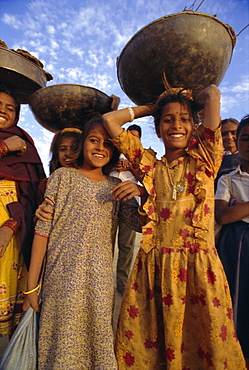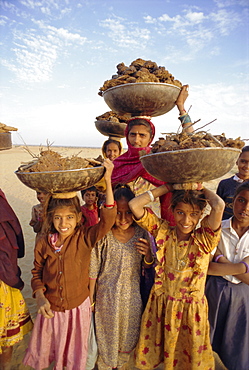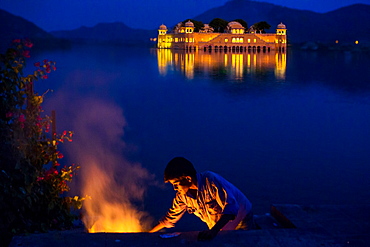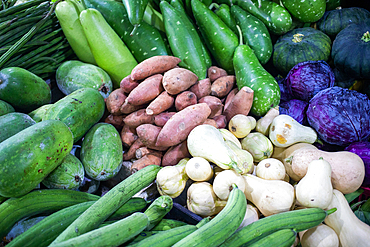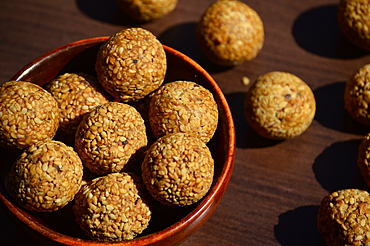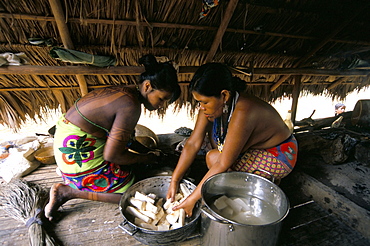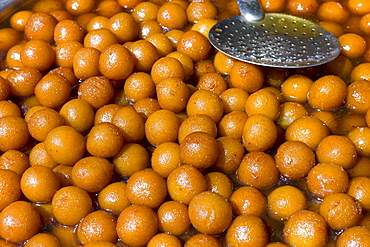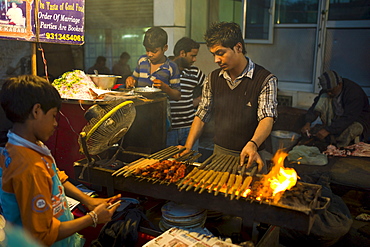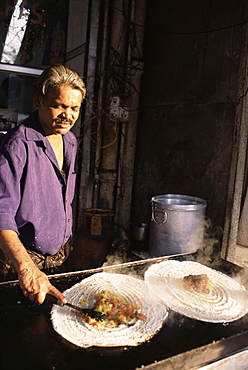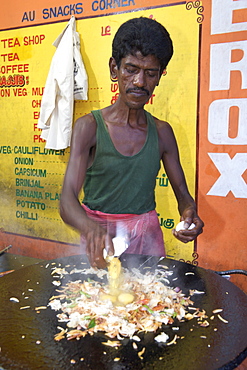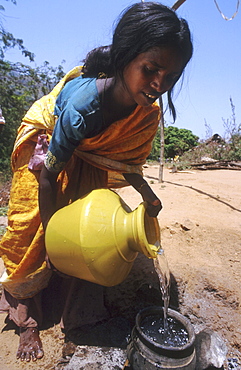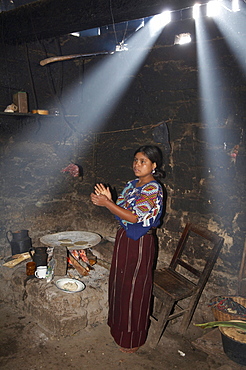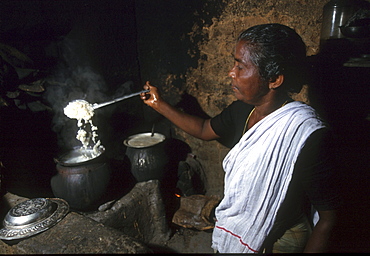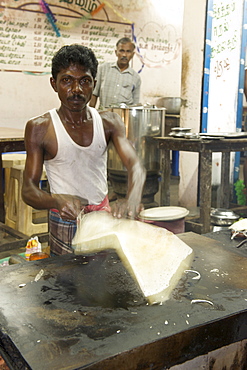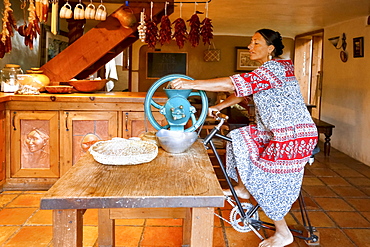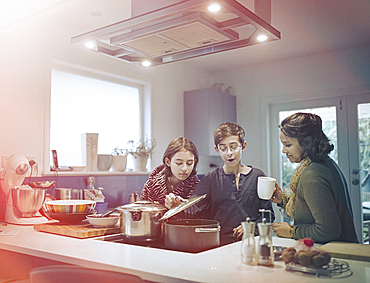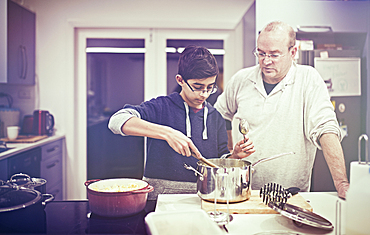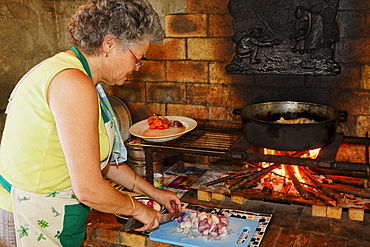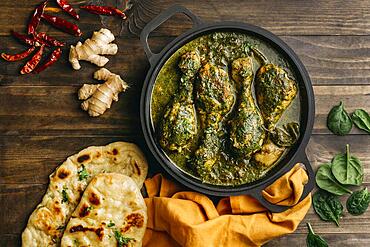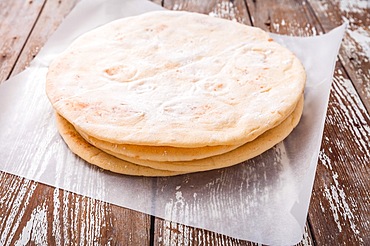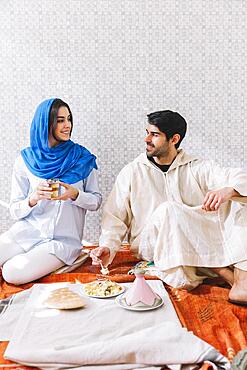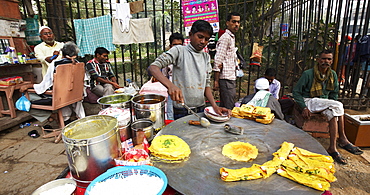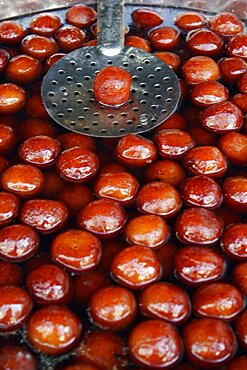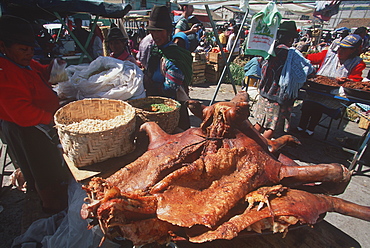Results
32 results found
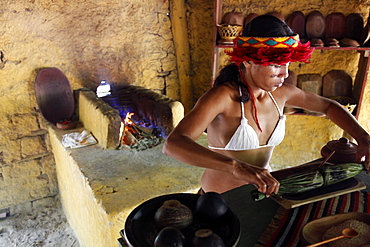
Pataxo Indian woman making food at the Reserva Indigena da Jaqueira near Porto Seguro, Bahia, Brazil, South America

French-Indian War reenactment, woman cooking a turkey over an open fire, Fort Niagara, Youngstown, New York State, United States of America, North America
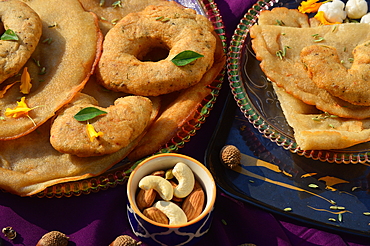
Bhalla babru, malpua, traditional snack dishes, sweet item in festivals and marriages, Mandi, Himachal Pradesh, India, Asia
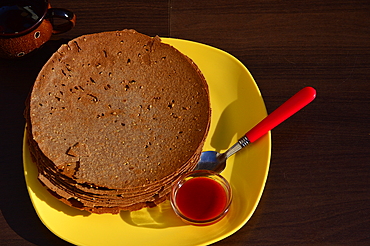
Indian Khakhra (khakra) (crispy roti) (ragi Khakra), a traditional Gujarati snack of thin crackers made from wheat flour, ragi and oil, Gujarat, India, Asia
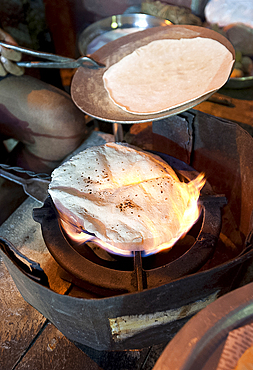
Street chapati maker, making bread over a naked flame using traditional basic equipment, Puri, Odisha, India, Asia

French-Indian War reenactment, woman cooking a turkey over an open fire, Fort Niagara, Youngstown, New York State, United States of America, North America
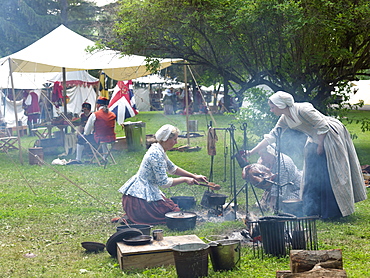
French-Indian War reenactment, women cooking a turkey over an open fire, Fort Niagara, Youngstown, New York State, United States of America, North America
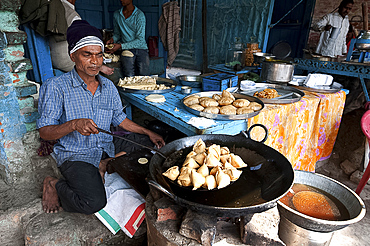
Samosas, pani puri and other lunchtime snacks being made by stallholder outside Ramnagar Fort, Varanasi, Uttar Pradesh, India, Asia
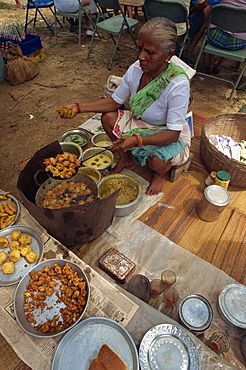
High angle view of an Indian woman sitting cooking onion bhajis for sale at a food stall in a market, Goa, India, Asia
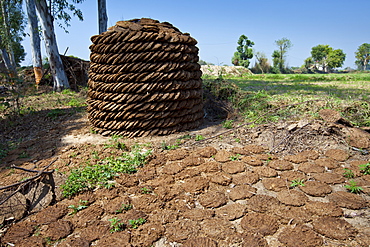
Neatly-stacked dried cow dung, hand-formed into pats to be used for fuel for cooking, at a farm in Agra, Uttar Pradesh, India
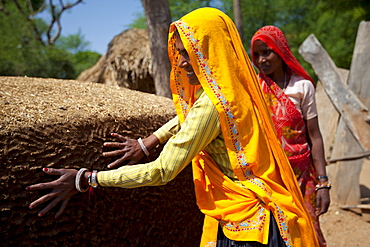
Indian woman villagers patting cow dung mound for cooking fuel at Kutalpura Village in Rajasthan, Northern India
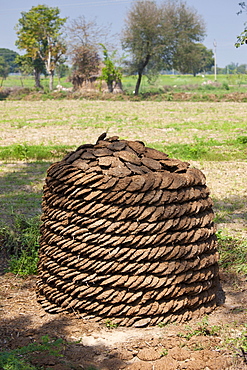
Neatly-stacked dried cow dung, hand-formed into pats to be used for fuel for cooking, at a farm in Agra, Uttar Pradesh, India

Indian woman in sari carrying cow dung pats to dry for cooking fuel at Khore village in Rajasthan, Northern India
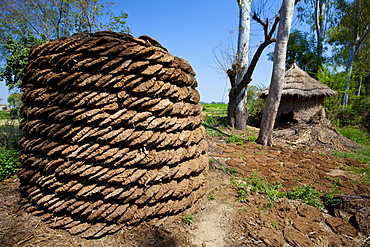
Neatly-stacked dried cow dung, hand-formed into pats to be used for fuel for cooking, at a farm in Agra, Uttar Pradesh, India
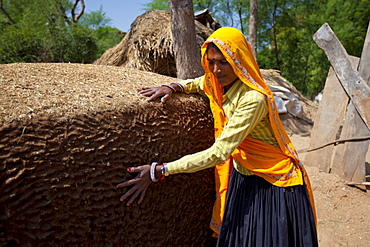
Indian woman villagers patting cow dung mound for cooking fuel at Kutalpura Village in Rajasthan, Northern India
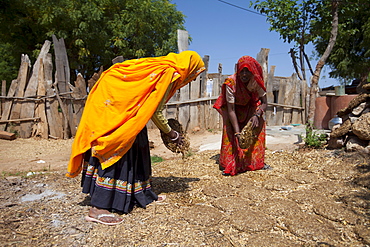
Indian woman villagers drying cow dung for cooking fuel at Kutalpura Village in Rajasthan, Northern India
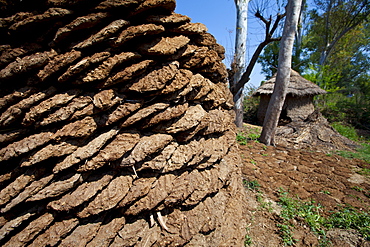
Neatly-stacked dried cow dung, hand-formed into pats to be used for fuel for cooking, at a farm in Agra, Uttar Pradesh, India
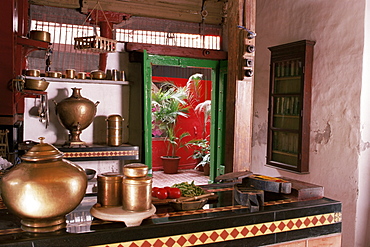
Kitchen area with traditional brass cooking utensils and samovar in restored traditional Pol house, Ahmedabad, Gujarat state, India, Asia
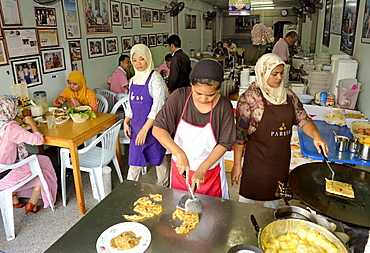
Muslim shop serving martabak, a kind of Malaysian-Indian pancake, Phuket town, Thailand, Southeast Asia, Asia
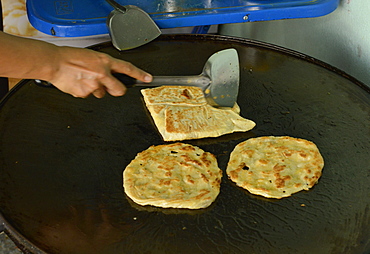
Muslim shop serving martabak, a kind of Malaysian-Indian pancake, Phuket town, Thailand, Southeast Asia, Asia
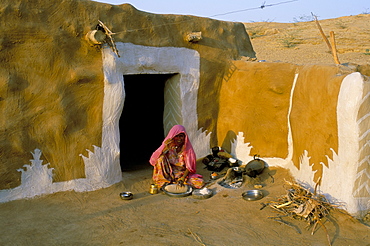
Woman cooking outside house with painted walls, village near Jaisalmer, Rajasthan state, India, Asia
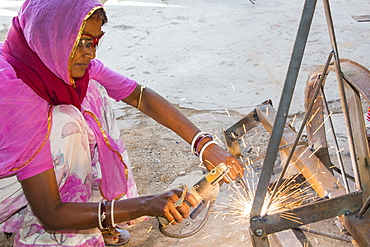
Women welding joints during the construction of solar cookers at the Barefoot College in Tilonia, Rajasthan, India. The Barefoot College is a worldwide charity, founded by Bunker Roy, its aims are, education, drinking water, electrification through solar power, skill development, health, women empowerment and the upliftment of rural people. Solar cookers save women having to walk to the froest to cut down wood for cooking, thus saving the forests, and a daily chore for woman.
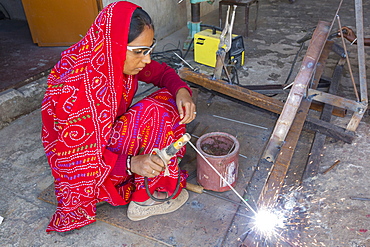
Women welding joints during the construction of solar cookers at the Barefoot College in Tilonia, Rajasthan, India. The Barefoot College is a worldwide charity, founded by Bunker Roy, its aims are, education, drinking water, electrification through solar power, skill development, health, women empowerment and the upliftment of rural people. Solar cookers save women having to walk to the froest to cut down wood for cooking, thus saving the forests, and a daily chore for woman.
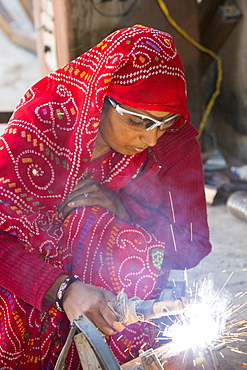
Women welding joints during the construction of solar cookers at the Barefoot College in Tilonia, Rajasthan, India. The Barefoot College is a worldwide charity, founded by Bunker Roy, its aims are, education, drinking water, electrification through solar power, skill development, health, women empowerment and the upliftment of rural people. Solar cookers save women having to walk to the froest to cut down wood for cooking, thus saving the forests, and a daily chore for woman.
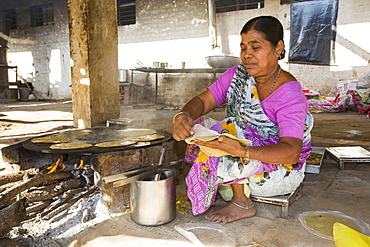
The Muni Seva Ashram in Goraj, near Vadodara, India, is a tranquil haven of humanitarian care. The Ashram is hugely sustainable, next year it will be completely carbon neutral. Its first solar panels were installed in 1984, long before climate change was on anyones agenda. Their energy is provided from solar panels, and wood grown on the estate. Waste food and animal manure is turned inot biogas to run the estates cars and also used for cooking. Solar cookers are also used, and the air conditioning for the hospital is solar run. 70 % of the food used is grown on the estate. They provide an orphanage, schools for all ages, vocational training, care for the elderly, a specialist cancer hospital withstate of the art machinary, and even have a solar crematorium. This shot shows a cook preparing chapatis on a biofuel stove.
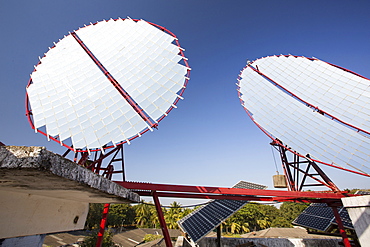
The Muni Seva Ashram in Goraj, near Vadodara, India, is a tranquil haven of humanitarian care. The Ashram is hugely sustainable, next year it will be completely carbon neutral. Its first solar panels were installed in 1984, long before climate change was on anyones agenda. Their energy is provided from solar panels, and wood grown on the estate. Waste food and animal manure is turned inot biogas to run the estates cars and also used for cooking. Solar cookers are also used, and the air conditioning for the hospital is solar run. 70 % of the food used is grown on the estate. They provide an orphanage, schools for all ages, vocational training, care for the elderly, a specialist cancer hospital withstate of the art machinary, and even have a solar crematorium. This shot shows solar panels that focus the suns rays on heat exchangers to boil oil, which is then sent down to the kitchens below to heat the cookers.
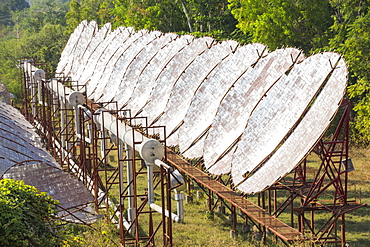
The Muni Seva Ashram in Goraj, near Vadodara, India, is a tranquil haven of humanitarian care. The Ashram is hugely sustainable, next year it will be completely carbon neutral. Its first solar panels were installed in 1984, long before climate change was on anyones agenda. Their energy is provided from solar panels, and wood grown on the estate. Waste food and animal manure is turned inot biogas to run the estates cars and also used for cooking. Solar cookers are also used, and the air conditioning for the hospital is solar run. 70 % of the food used is grown on the estate. They provide an orphanage, schools for all ages, vocational training, care for the elderly, a specialist cancer hospital withstate of the art machinary, and even have a solar crematorium. This shot shows the solar air conditioning for the Ashram's hospital.
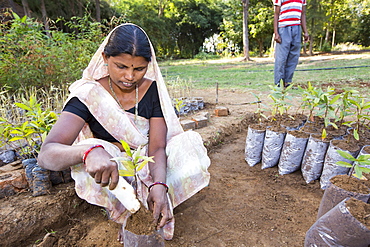
The Muni Seva Ashram in Goraj, near Vadodara, India, is a tranquil haven of humanitarian care. The Ashram is hugely sustainable, next year it will be completely carbon neutral. Its first solar panels were installed in 1984, long before climate change was on anyones agenda. Their energy is provided from solar panels, and wood grown on the estate. Waste food and animal manure is turned inot biogas to run the estates cars and also used for cooking. Solar cookers are also used, and the air conditioning for the hospital is solar run. 70 % of the food used is grown on the estate. They provide an orphanage, schools for all ages, vocational training, care for the elderly, a specialist cancer hospital withstate of the art machinary, and even have a solar crematorium. This shot shows a woman planting trees for onward growth in the Ashrams forests.

The Muni Seva Ashram in Goraj, near Vadodara, India, is a tranquil haven of humanitarian care. The Ashram is hugely sustainable, next year it will be completely carbon neutral. Its first solar panels were installed in 1984, long before climate change was on anyones agenda. Their energy is provided from solar panels, and wood grown on the estate. Waste food and animal manure is turned inot biogas to run the estates cars and also used for cooking. Solar cookers are also used, and the air conditioning for the hospital is solar run. 70 % of the food used is grown on the estate. They provide an orphanage, schools for all ages, vocational training, care for the elderly, a specialist cancer hospital withstate of the art machinary, and even have a solar crematorium. This shot shows the girls school.
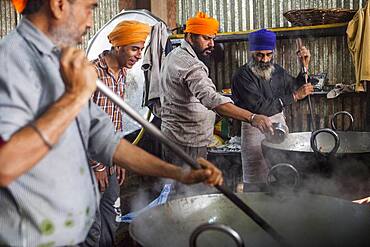
Volunteers cooking for the pilgrims who visit the Golden Temple, Each day they serve free food for 60,000 - 80,000 pilgrims, Golden temple, Amritsar, Punjab, India
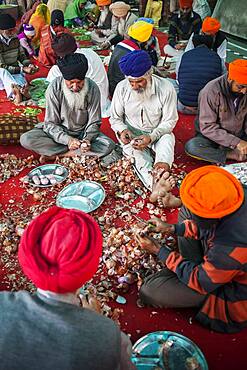
Volunteers preparing onions for cooking to do meals for the pilgrims who visit the Golden Temple, Each day, they serve free food for 60,000 - 80,000 pilgrims, Golden temple, Amritsar, Punjab, India
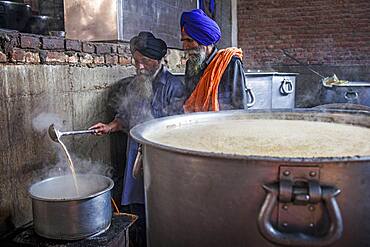
Making chai. Volunteers cooking for the pilgrims who visit the Golden Temple, Each day they serve free food for 60,000 - 80,000 pilgrims, Golden temple, Amritsar, Punjab, India
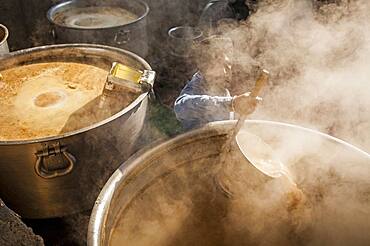
Maiking chai. Volunteer cooking for the pilgrims who visit the Golden Temple, Each day they serve free food for 60,000 - 80,000 pilgrims, Golden temple, Amritsar, Punjab, India
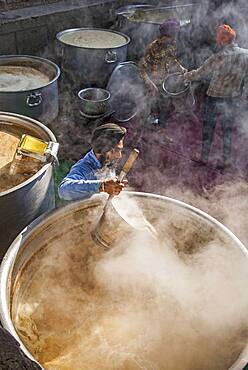
Maiking chai. Volunteers cooking for the pilgrims who visit the Golden Temple, Each day they serve free food for 60,000 - 80,000 pilgrims, Golden temple, Amritsar, Punjab, India
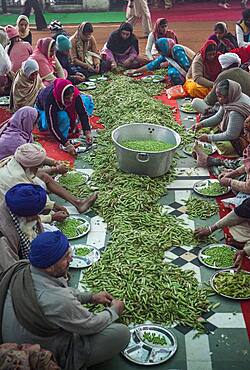
Volunteers preparing broad beans for cooking, to do meals for the pilgrims who visit the Golden Temple, Each day, they serve free food for 60,000 - 80,000 pilgrims, Golden temple, Amritsar, Punjab, India
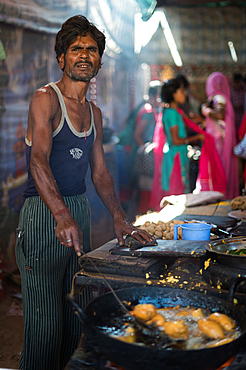
Pushkar Fair is the annual five-day camel and livestock fair, held in the town of Pushkar in the state of Rajasthan, India,
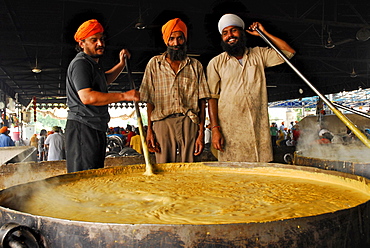
Golden Temple, three Sikh men with giant pot, free food for pilgrims, Sikh holy place, Amritsar, Punjab, India, Asia
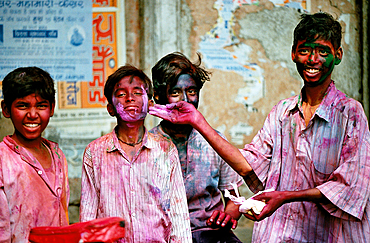
Indian boys celebrating Holi with stroing colors in the faces and on their clothes. Shot in Jaipur, India
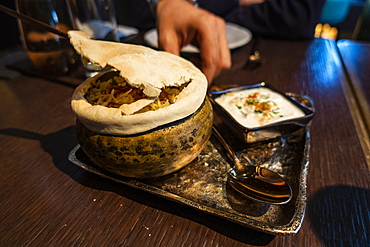
Delicious Indian fusion cuisine at Tamba Restaurant, Abu Dhabi, Abu Dhabi, United Arab Emirates, Middle East
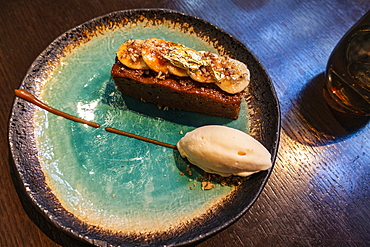
Delicious Indian fusion cuisine at Tamba Restaurant, Abu Dhabi, Abu Dhabi, United Arab Emirates, Middle East
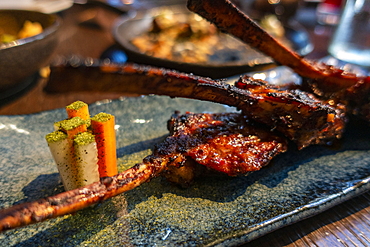
Delicious Indian fusion cuisine at Tamba Restaurant, Abu Dhabi, Abu Dhabi, United Arab Emirates, Middle East

The Muni Seva Ashram in Goraj, near Vadodara, India, is a tranquil haven of humanitarian care. The Ashram is hugely sustainable, next year it will be completely carbon neutral. Its first solar panels were installed in 1984, long before climate change was on anyones agenda. Their energy is provided from solar panels, and wood grown on the estate. Waste food and animal manure is turned inot biogas to run the estates cars and also used for cooking. Solar cookers are also used, and the air conditioning for the hospital is solar run. 70 % of the food used is grown on the estate. They provide an orphanage, schools for all ages, vocational training, care for the elderly, a specialist cancer hospital withstate of the art machinary, and even have a solar crematorium. This shot shows solar panels that focus the suns rays on heat exchangers to boil oil, which is then sent down to the kitchens below to heat the cookers.
